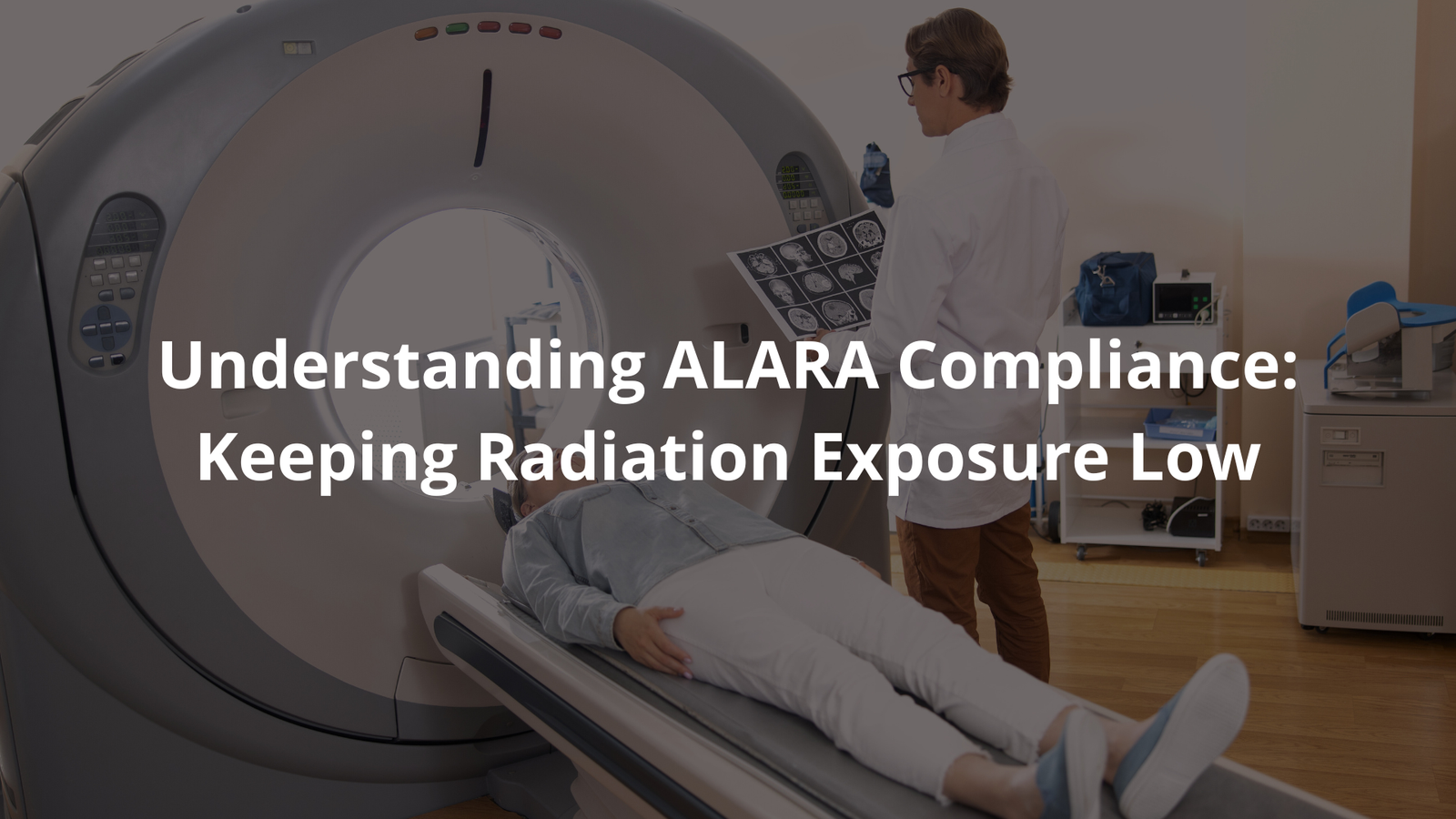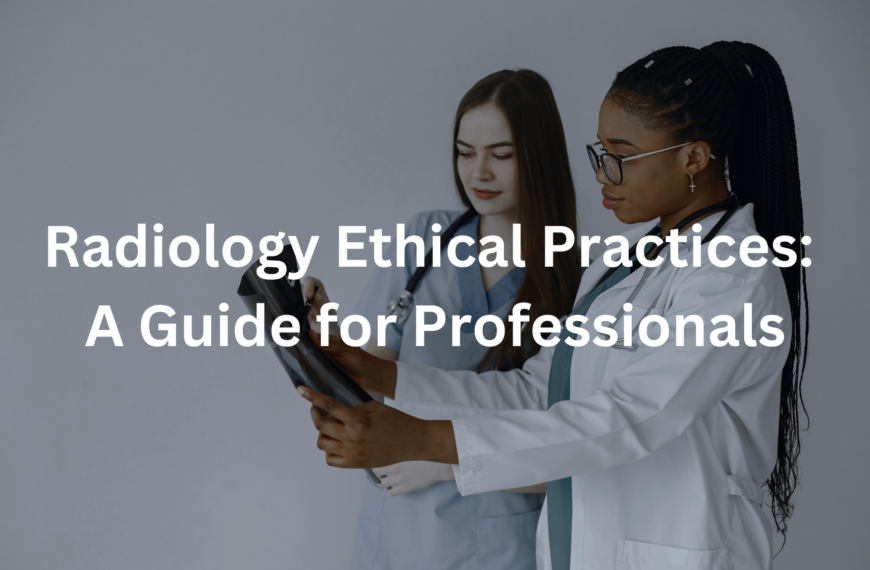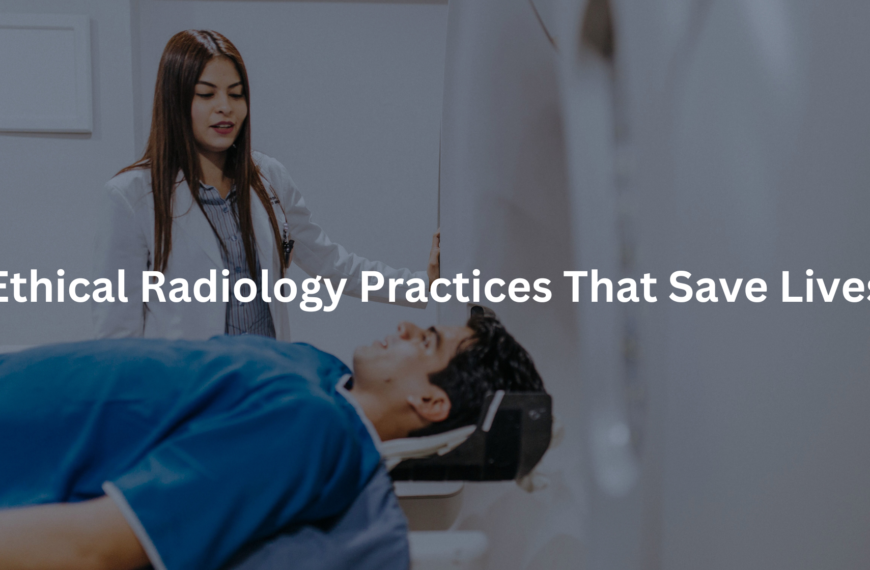Learn about ALARA compliance and how it helps keep people safe from radiation in health care and other industries.
ALARA compliance is paramount, particularly in healthcare settings where ionising radiation is utilised. ALARA, an acronym for “As Low As Reasonably Achievable”, dictates that radiation exposure should be minimised while maintaining diagnostic and therapeutic efficacy. Medical professionals who operate x-ray machines and CT scanners must adhere to stringent protocols.
The principle does not advocate forgoing beneficial procedures. Rather, it promotes employing practical methods for dose reduction. Shielding, distance, and time optimisation are crucial factors. Implementing these strategies can significantly lower radiation exposure. Considering that excessive ionising radiation poses health risks, diligence in ALARA implementation is imperative.
Want to learn what specific measures you can take? Keep reading.
Key Takeaway
- ALARA means keeping radiation exposure as low as possible.
- Medical professionals must follow safety standards and guidelines.
- Regular checks and training help everyone stay safe.
What Is ALARA Compliance?
Sitting in the library at Yale, surrounded by stacks of books, you cant help but think about safety; isnt it funny how something so crucial can be so easily overlooked. ALARA compliance, or As Low As Reasonably Achievable, is a big deal in the radiation game. And it boils down to one thing: keep radiation exposure as low as possible.
For the folks using radiation every day, ALARA offers some rules. Simple as that.
- For Patients: Making sure the benefit of the scan outweighs the radiation risk.
- For Staff: Using shields and keeping their distance from the source. [1]
Now, the Royal Australian and New Zealand College of Radiologists, they really push ALARA. Their goal? Safe radiation practices in hospitals, for everyone. Doctors, technicians, patients, you name it.
Think of it like a safety net, a way to catch mistakes and make sure everyones doing their bit to keep radiation levels down. And its important, you know, because too much radiation isnt good for anyone, no matter how tough you might think you are.
Why Is It Important?
When it comes to radiation, it’s not really small stuff. This radiation stuff, it isnt just from nuclear reactors and science labs. Its in X ray machines in hospitals (a pretty common sight), its used to fight cancer, and for all sorts of things that help us, you know, live longer and healthier.
But theres a catch. Too much radiation? Bad news.
- Health Risks: High doses increase cancer risk, cause burns, and more.
- Long Term Effects: These might not show up for years.
- Cumulative Damage: Every little bit adds up.
That’s why ALARA compliance matters. Its not just some rule, its a way to protect people. So, it makes sense that its important in hospitals, clinics, anywhere they use radiation. In healthcare, it’s about weighing the need for medical imaging against the risk.
Its about making informed decisions, not just blasting everyone with radiation and hoping for the best. Because, lets be honest, thats not a good plan.
The Rules of ALARA
Credits: Fluke Biomedical
Down Under, they take ALARA seriously. The Radiation Safety Act 1999, thats the law of the land when it comes to radiation. It says to keep doses low, and it also says to keep an eye on the costs and practicalities. Its not enough to just say be safe, you have to actually be smart about it.
So, how do they do it? They follow some pretty simple steps:
- Time: Less time near radiation equals less exposure.
- Distance: The further away, the better. Simple physics.
- Shielding: Barriers that block radiation. Lead aprons, concrete walls, the works.
Think of it like this, youre trying to avoid getting sunburnt at the beach. You dont want to spend all day baking in the sun, you want to sit under an umbrella, and maybe even wear a big hat. Same idea.
Only this time, its radiation, and the stakes are a little higher. The Radiation Safety Act balances safety with whats practical. You dont want to spend so much money on radiation protection that you cant afford to treat patients, do you? No one does.
Making Sure We Follow ALARA
Hospitals and clinics, they dont just wing it with ALARA. They have programs in place. The Medical Imaging Accreditation Program, for example, is like a safety inspector that checks if places are keeping patients safe. Cant just trust everyone to do the right thing. You need someone looking over their shoulder.
The Royal Australian and New Zealand College of Radiologists, they’re in on it too. They help make sure everyone understands the rules and how to stay safe when using radiation.
And it doesnt stop there. Regular checks and training sessions are also important.
- New Techniques: Keeping up with the latest in radiation safety.
- Updated Regulations: Because the rules can change, you know.
- Equipment Training: Learning how to use new gear safely.
Its like being a pilot. You dont just learn how to fly once and then never practice again. You need to keep training, keep learning, and keep checking your equipment. Otherwise, well, things could go wrong. Same goes for radiation. You need to stay on top of it, or it could come back to bite you.
The Role of Professionals

ALARA compliance is more than just laws and rules, its about people. All sorts of people, actually. A radiation safety officer, for instance, they are like the safety coach for radiation. Theyre the ones who keep track of radiation levels, make sure everyone follows the rules, and generally keep things safe.
But its not just them.
- Radiologists: Doctors who use radiation to diagnose and treat illnesses.
- Technicians: Those who operate the machines.
- Physicists: They measure radiation and make sure the equipment works right. [2]
Its a team effort. Everyone needs to know their part, and everyone needs to take it seriously. The radiation safety officer, they might be the coach, but everyone needs to play the game. Because at the end of the day, its about protecting everyone from the dangers of radiation. And if everyone does their bit, then everyone stays safe. Now thats something worth striving for.
Keeping Records
You cant manage what you dont measure. Keeping records, its a big deal when it comes to ALARA compliance. If workers keep track of their radiation exposure, they can see if they’re following the rules. They can also see if they need to make changes.
Think of it like this, youre trying to save money. If you dont keep track of how much youre spending, you wont know if youre actually saving anything. Same goes for radiation. If you dont keep track of your exposure, you wont know if youre following ALARA.
And the records can show trends.
- Exposure Levels: How much radiation are people getting?
- Work Practices: Are people following the rules?
- Equipment Performance: Is the equipment working properly?
So, record keeping. Sounds boring, maybe. But its important. Because its the only way to know if youre actually doing a good job of keeping radiation exposure As Low As Reasonably Achievable.
FAQ
What is Radiation Protection and How Does Dose Optimization Work?
Radiation protection involves managing exposure to ionizing radiation across various settings like nuclear medicine and industrial radiography. Dose optimization is a key strategy that helps reduce unnecessary radiation exposure by carefully controlling and minimising radiation sources. It’s about finding the right balance between completing necessary tasks and keeping radiation exposure as low as reasonably achievable. Health physics professionals use techniques like shielding and personal protective equipment to ensure safety while maintaining operational efficiency.
How Do Occupational Exposure and Safety Standards Intersect?
Occupational exposure management is crucial in workplaces with radiation risks. Safety standards provide a regulatory framework for protecting workers from potential harm. These standards outline exposure limits, require comprehensive risk assessments, and mandate radiation safety training. Organisations must implement protocols that minimise employee exposure, conduct regular radiation surveys, and maintain detailed exposure records. The goal is to create a robust safety culture that prioritises worker health and well-being.
What Role Does a Radiation Safety Officer Play in Compliance?
A radiation safety officer is the linchpin of an effective radiation safety management system. They oversee radiation safety protocols, conduct safety inspections, and ensure compliance with radiation safety legislation. Their responsibilities include developing safety guidelines, managing radiation monitoring programs, and implementing emergency procedures. They also play a critical role in radiation safety audits, incident reporting, and maintaining documentation that demonstrates organisational commitment to radiation protection.
How Are Radiation Monitoring and Risk Assessment Connected?
Radiation monitoring is a key component of comprehensive risk assessment in radiation-sensitive environments. This process involves using specialised dosimetry equipment to track and measure radiation exposure levels. By systematically collecting and analysing exposure data, organisations can identify potential risks, develop targeted safety strategies, and implement preventive measures. Continuous monitoring allows for real-time risk mitigation and helps organisations maintain compliance with safety standards.
What Are the Essential Components of a Radiation Management Plan?
A robust radiation management plan encompasses multiple critical elements. It includes detailed safety protocols, exposure control strategies, and comprehensive training programs. The plan must address radiation warning signs, contamination control methods, and waste management procedures. It should outline emergency response strategies, specify required personal protective equipment, and establish clear procedures for incident investigation and corrective actions.
Why Is Radiation Safety Training and Awareness Important?
Radiation safety training is fundamental to creating a proactive safety culture. It equips workers with knowledge about potential radiation risks, proper handling techniques, and emergency procedures. Effective training programs cover topics like radiation sources, exposure limits, and proper use of protective equipment. By fostering awareness and understanding, organisations can significantly reduce the likelihood of incidents and promote a culture of continuous safety improvement.
Conclusion
ALARA compliance, its a must for safety in places with radiation. Places like hospitals. Laws guide, professionals work hard, everyone does their bit. Time, distance, shielding. They help keep radiation low.
Now, keeping radiation exposure low is always a smart idea. It’s about protecting yourself and others. And it shows that you actually care.
References
- https://www.irefer.org.au/why-irefer/benefits
- https://www.safetyandquality.gov.au/sites/default/files/2022-08/literature_review_-_safety_and_quality_in_diagnostic_imaging.docx




